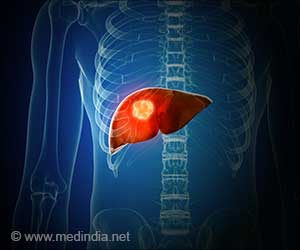A new Machine Learning model might predict infection Risk from Colitis Causing Bacteria, finds a new study. This can be applied to data from medical centers with different patient populations, electronic health record systems to give an accurate prediction.

‘In half of those who were infected, accurate predictions could have been made at least five days before diagnostic samples were collected, which would allow highest-risk patients to be the focus of targeted antimicrobial interventions.’





Every year nearly 30,000 Americans die from an aggressive, gut-infecting bacteria called Clostridium difficile (C. difficile), which is resistant to many common antibiotics and can flourish when antibiotic treatment kills off beneficial bacteria that normally keep it at bay.Preliminary data from their study, which is being published today in Infection Control and Hospital Epidemiology, were presented last October at the ID Week 2017 conference.
"Despite substantial efforts to prevent C. difficile infection and to institute early treatment upon diagnosis, rates of infection continue to increase," says Erica Shenoy, MD, Ph.D., of the MGH Division of Infectious Diseases, co-senior author of the study and assistant professor of Medicine at Harvard Medical School.
"We need better tools to identify the highest risk patients so that we can target both prevention and treatment interventions to reduce further transmission and improve patient outcomes," he added.
The authors note that most previous models of C. difficile infection risk were designed as "one size fits all" approaches and included only a few risk factors, which limited their usefulness.
Advertisement
Their method allows the development of institution-specific models that could accommodate different patient populations, different EHR systems and factors specific to each institution.
Advertisement
Using their machine-learning-based model, the investigators analyzed de-identified data - including individual patient demographics and medical history, details of their admission and daily hospitalization, and the likelihood of exposure to C. difficile - from the EHRs of almost 257,000 patients admitted to either MGH or to Michigan Medicine - U-M's academic medical center - over periods of two years and six years, respectively. The model generated daily risk scores for each individual patient that, when a set threshold is exceeded, classify patients as at high risk.
Overall, the models were highly successful at predicting which patients would ultimately be diagnosed with C. difficile.
In half of those who were infected, accurate predictions could have been made at least five days before diagnostic samples were collected, which would allow highest-risk patients to be the focus of targeted antimicrobial interventions.
If validated in prospective studies, the risk prediction score could guide early screening for C. difficile. For patients diagnosed earlier in the course of the disease, initiation of treatment could limit the severity of the illness, and patients with confirmed C. difficile could be isolated and contact precautions instituted to prevent transmission to other patients.
The research team has made the algorithm code freely available here for others to review and adapt for their institutions. Shenoy notes that facilities that explore applying similar algorithms to their institutions will need to assemble the appropriate local subject-matter experts and validate the performance of the models in their institutions.
Study co-author Vincent Young, MD, Ph.D., the William Henry Fitzbutler Professor in the Department of Internal Medicine at U-M, adds, "This represents a potentially significant advance in our ability to identify and ultimately act to prevent infection with C. difficile. The ability to identify patients at greatest risk could allow us to focus expensive and potentially limited prevention methods on those who would gain the greatest potential benefit. I think that this project is a great example of a 'team science' approach to addressing complex biomedical questions to improve healthcare, which I expect to see more of as we enter the era of precision health."
Source-Eurekalert









